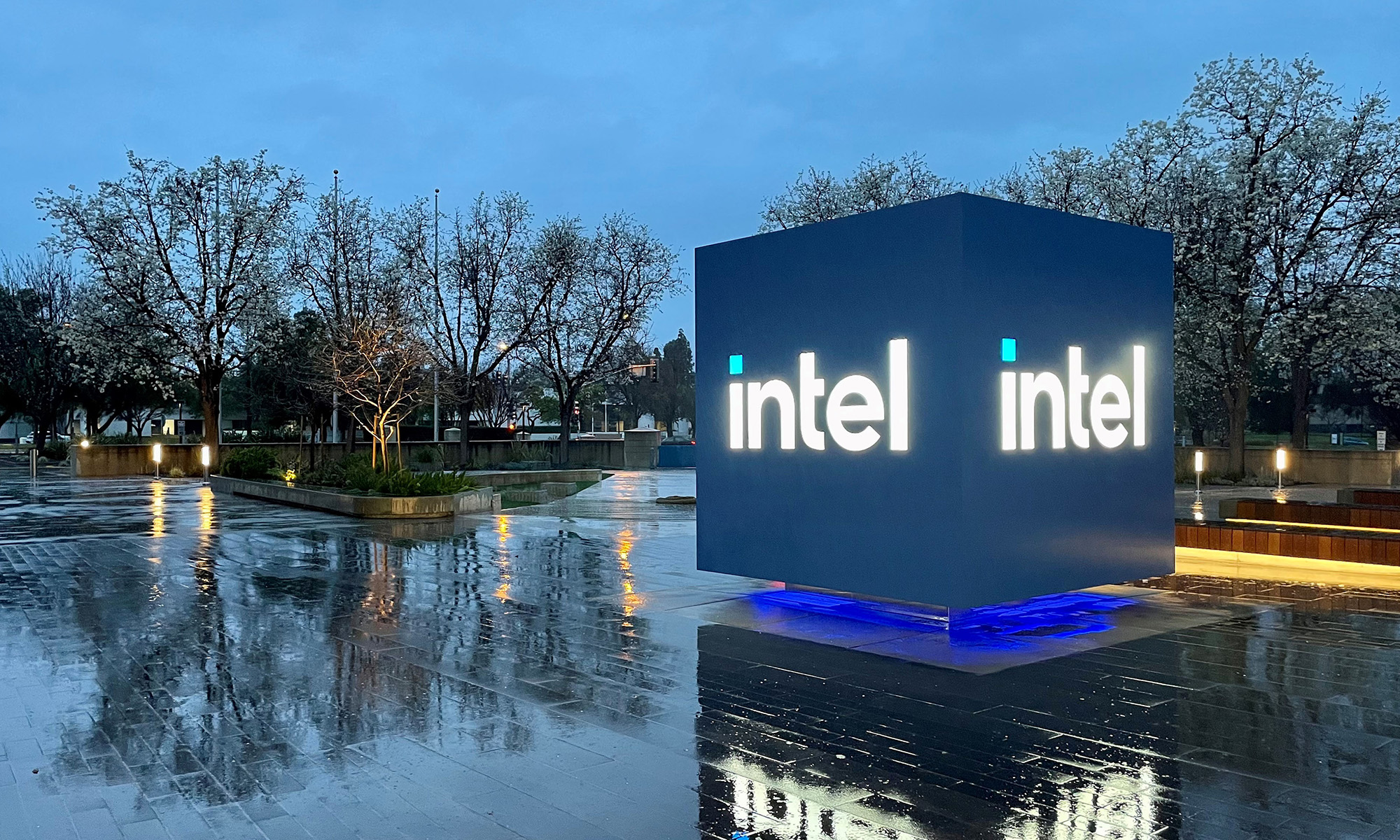Xilinx's (XLNX +0.00%) stock recently popped after The Wall Street Journal claimed AMD (AMD +6.37%) was mulling a takeover of the programmable chipmaker for over $30 billion. Investors ought to be skeptical about buyout rumors, but AMD's rival Intel (INTC +9.40%) should worry about this potential deal.
Mirroring Intel's purchase of Altera
Xilinx sells field-programmable gate arrays (FPGAs) to a wide range of industries. Unlike traditional chips, FPGAs can be reprogrammed after they're manufactured, which allows them to be customized and optimized for myriad tasks.
FPGAs are often used in data centers to accelerate demanding AI and analytics tasks. They also optimize communications across 5G networks, radar systems, and military networks. Xilinx and Altera have been the world's largest producers of FPGAs since the mid-1990s.

Image source: Getty Images.
Intel bought Altera for $16.7 billion in late 2015, and the company is now the core of its Programmable Solutions Group (PSG). Intel's PSG revenue rose 5% year over year to $1.02 billion, or 3% of its top line, in the first half of 2020. Intel often bundles Altera's FPGAs with its Xeon CPUs in data centers.
Xilinx controls about 60% of the FPGA market, while Altera controls the remaining 40%. However, AMD only controls about 2% of the server market, while Intel's Xeons dominate the remaining 98%. Therefore, AMD likely wants to bundle its new Epyc CPUs with Xilinx's FPGAs to gain ground against Intel in the tough data center market.
Striking while the iron's hot
Intel and AMD's fortunes diverged significantly over the past 12 months. Intel's stock rose just 4% as it struggled with a shortage of 14-nanometer chips, late deliveries of 10-nanometer chips, and the delayed launch of its upcoming 7-nanometer chips.
Those problems all stemmed from the inability of Intel's internal foundry to keep pace with Taiwan Semiconductor Manufacturing in the "process race" to manufacture smaller and more powerful chips. AMD, which doesn't own a foundry, outsources the production of its top chips to Taiwan Semiconductor.
That key difference enabled AMD to provide a constant supply of CPUs as Intel struggled with shortages, and helped it overtake Intel in the process race in both PC and data center CPUs.
Intel still dominates the server market, but its total share of the CPU market fell from 77.1% to 63.9% between the fourth quarters of 2018 and 2020, according to PassMark Software. During the same period, AMD's share jumped from 22.9% to 36.1%, fueled by the growth of its Ryzen CPUs across the notebook and desktop markets.
That growth, along with the strength of its GPU business, lifted AMD's stock nearly 190% over the past 12 months. AMD likely wants to leverage its recent growth to catapult itself into Intel's data center market -- and taking over Xilinx could represent a bold first step.

Image source: Getty Images.
Plenty of potential hurdles
It makes strategic sense for AMD to buy Xilinx, but the deal could face plenty of challenges. AMD only held $1.8 billion in cash and equivalents at the end of the second quarter, so it will likely need to take on more debt or fund most of the deal in stock.
The rumored $30 billion price tag is also fairly high for a company that generated $3.2 billion in revenue and $793 million in net income last year. The deal could also be blocked by regulators, who possibly don't want two chipmakers to dominate the CPU and FPGA markets.
Even if the takeover is approved, AMD and Xilinx could still struggle against Intel in the data center market for two reasons. First, Intel's Xeon chips still enjoy a "best in breed" reputation as the world's fastest server CPUs. Second, Intel's PSG business also owns eASIC, a company that produces customized ASIC chips that complement FPGAs in many industries.
Intel is still the only company that can bundle x86 CPUs, FPGAs, and ASIC chips together. AMD will only be able to offer x86 CPUs and FPGAs, which will force customers to buy custom ASIC chips from chipmakers like Marvell. In short, AMD might need to develop ASIC chips or acquire an ASIC chipmaker to actually go toe-to-toe against Intel in data centers.
But Intel should still pay attention
AMD's rumored interest in Xilinx isn't an imminent threat to Intel yet. But Intel should follow AMD's moves closely, lest it leaves its "data-centric" businesses, which generated over half its revenue last quarter, exposed to aggressive competition from Epyc CPUs and Xilinx FPGAs.






